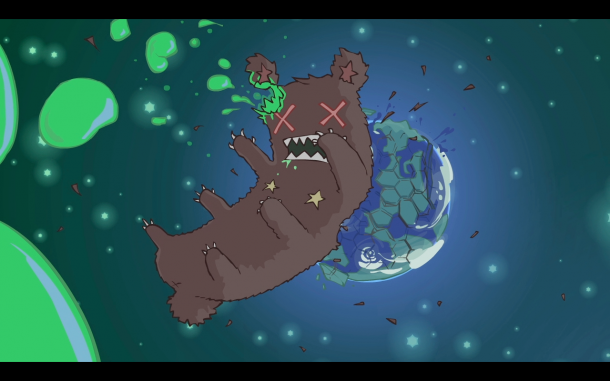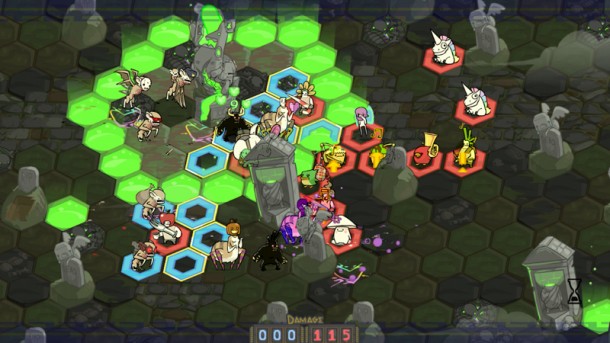The Behemoth has a long history of changing genres with each new release. Following the medieval action-adventure romp of Castle Crashers, the indie studio moved onto the platforming genre with BattleBlock Theater. Their latest venture, Game 4 (working title), makes a large enough leap that might make even the BattleBlock Theater friends pale. This time around the Behemoth has their sights set on the RPG genre by developing what they refer to as a fast-paced turn-based game.
As might be expected of the Behemoth, they make this daunting leap with panache and seeming effortlessness. Game 4 isn’t just good—it’s easily as addicting as each of their previous products. The build I played at PAX East was stylish, fun, and remarkably polished for a demo. I had the opportunity to experience both the main demo (which acts as a tutorial) and the extended demo (which showcases the quest system).
Those familiar with the Behemoth will find the developer’s signature flourishes in Game 4. The sense of humor is very much the same, as are the cute, hand-drawn aesthetics that were characteristic of past games. Will Stamper returns as the omniscient narrator, and his contributions fall squarely between absolutely hilarious and rather terrifying.

The first demo reveals some of the story’s broader strokes: a giant bear has crashed into the world, resulting in an apocalyptic situation. Horatio, along with a cast of unlikely heroes, sets out on an adventure against the will of the aforementioned maleficent narrator. The player’s party, in addition to dodging the occasional bear blood storm, must also deal with a wide variety of enemies — all of which may be recruited. These enemies range from sentient (and adorable) cupcakes to swordfish-wielding thugs.
Both Game 4’s open world and combat screens consist of hexes, which denote how far a given character can move. The world operates much like a board-game with players clicking on a hex to direct their caravan of heroes. There is a limited range of visibility represented by smoke, which lends a sense of mystery to the world and reinforces the necessity of exploration. Here, players may find and complete quests, or they may encounter a random group of baddies to terminate with extreme prejudice.
Combat also lives and dies by the hexes. Like in the open world, party members are directed to move by selecting a specific hex. If a party member is close enough to the enemy to attack, target icons appear over their heads. If a character’s weapon of choice is especially useful against an enemy, a skull appears. The various armaments and armor form a neat rock-paper-scissors-esque chain of effectiveness: shields are good against arrows but bad against helms. Maces are effective against helms, but the wielder is vulnerable against arrow attacks. While these aspects form the core combat experience, still other weapons add more complexity. Axes can be thrown to stun enemies one hex away; characters carrying nets can recruit any enemy into the party, but they must be at a set distance to successfully do so.

Because of this system, strategy is paramount. Early on, the game encouraged me to move the character with the shield to the front of the fray, so that he could deflect arrows from reaching his teammates behind him. Of course, the player should be cautious: the characters have a mind of their own, and they will choose which in-range enemy to attack. Balancing defense, offense, and character strengths maximizes the player’s score with each victory. That said, the strategy is never so in-depth that it crumbles under its own weight. While the scoring system may be good incentive to improve, the fact that combat plays a little like checkers ensures that it remains quick.
The Behemoth has no idea when Game 4 will be released, but from what I’ve already glimpsed in the demo, I’d say that its development is well worth following. Even the incomplete demo’s frantic pace and crazy antics left me with an ear-to-ear grin.

![Icing on the Cupcake: Hands-on with The Behemoth’s Game 4 [PAX East]](https://www.sidequesting.com/wp-content/uploads/Game4_ArenaGameplayUziGiraffe.png)
No Comments